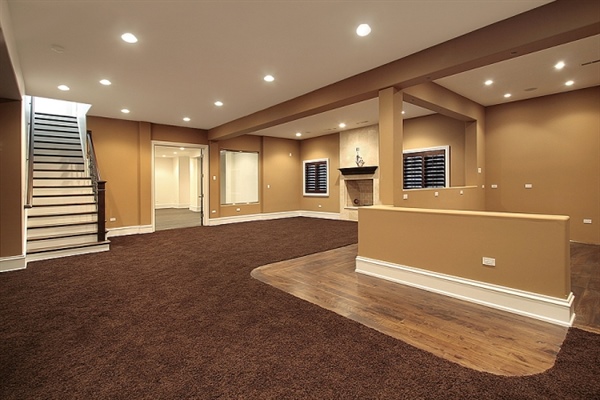How to Choose Carpet for Your Basement Remodel

Remodeling your basement is an exciting time. You’re likely looking forward to having a home that’s more to your liking and seeing the results of updated space. But, during the remodel, you must decide what materials to use.
One of the most important decisions is the carpet. Your flooring needs to be durable, beautiful, and comfortable, so knowing how to make a suitable choice can seem overwhelming. Luckily, the home remodeling professionals at Roofers of Minnesota are here to help you.
Read this guide to get some tips for choosing the right option for your remodel!
Think About the Purpose of the Room
The first step in selecting a suitable carpet is considering how the room will be used. If your basement remodel is mostly going to be a family area, you’ll want something that can withstand a lot of use.
On the other hand, if the basement isn’t used as often, you can go with something bolder that’s not as easy to clean.
Consider Carpet Pile & Face Weight Classifications
Next, it’s helpful to know a bit about pile height and face weight. While these might not be phrases you’ve heard before, they are essential for picking carpets. The pile height refers to how tall the carpet fibers are.
There are usually three main options:
- Low Pile: These carpets are dense, durable, and easy to clean. It’s a good option for high-traffic areas or if you have pets.
- Medium Pile: This is the middle-ground option. It’s a bit more comfortable and softer than a low pile but still easy to clean.
- High Pile: Finally, these carpets are soft and fluffy. They are very comfortable to walk on, but they are also more high maintenance.
Carpet Face Weight
Along with the height of the fibers, face weight is another consideration. This measures the density of the yard in the carpet.
So, a lower face weight selection will be less dense and less durable. Higher face-weight carpets last longer, but they are also more expensive.
Basement Carpet Fibers
Carpet fibers come in two types–synthetic and natural. Both have advantages and disadvantages, though there is a clear winner when it comes to basement carpets.
Synthetic carpets are better suited for basements due to their breathability, which means the carpet does not retain moisture. Basements are more humid than other parts of your home, and synthetic carpets will help prevent mold and mildew from developing.
Carpet Padding
If you have carpet in the rest of your home, then you likely have carpet padding underneath. Because basement floors are made of concrete and tend to be moist and cold, carpet padding is necessary. There are two types of carpet padding: polyurethane and rubber, and both come in open-cell and closed-cell.
You should avoid using closed-cell carpet padding in the basement because it tends to trap moisture, which can cause mildew or go into your drywall. Open-cell carpet padding does not trap moisture and is also cheaper than closed-cell.
Extra Tip: Use a Dehumidifier
Basements tend to be more humid because they lack airflow, and moisture occurs underground in general. If you don’t already have a dehumidifier in your basement, we highly recommend incorporating one. Dehumidifiers remove moisture from the basement air and can help prevent mold and mildew from forming.
Contact Your Carpet & Flooring Experts in the Twin Cities
If you’re remodeling your basement or any room in your home, Roofers of Minnesota provides carpet installation. With over 25 years of experience, we can help you find the perfect choice for your basement remodel.
Call us at 612-205-4791 to request a quote!